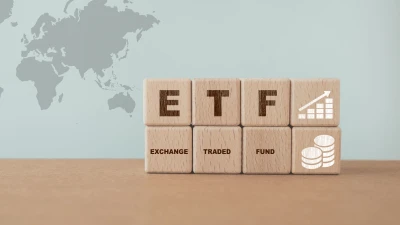EMs to outperform 2021: Fund managers



About 50% of global fund managers believe emerging markets (EMs) will outperform in 2021 and in the past three weeks EM debt and equities have experienced record inflows at US$28 billion ($37.9 billion), according to Bank of America (BofA) data.
Last week, EM debt experienced US$2.7 billion in flows and EM equities US$5.6 billion, according to BofA.
In terms of equities the largest EM flows went to China at 0.6% of weekly assets under management, followed by Russia at 0.3%. There was 0.9% in outflows for Brazil and 0.3% in outflows for India.
According to research house EPFR, EMs have picked up a tailwind from expectations that 2021 will see more travel due to the deployment of vaccines which would boost tourism and oil prices.
“All four of the major regional groups attracted fresh money, with Latin America equity funds recording their biggest inflow since March and EMEA equity funds snapping a 21-week outflow streak,” its latest flow report said
“Interest in China drove the headline number for Asia ex-Japan equity funds during the week ending 18 November. Flows into Hong Kong, Greater China, Taiwan and China equity funds hit three, eight, 11 and 18-week highs respectively as China and ASEAN members signed the Regional Comprehensive Economic Partnership, setting the stage for a 15-nation regional trade bloc that also includes Japan. Retail investors continue to gravitate to China and the region, with retail commitments to China equity funds setting a new weekly record.”
It noted that Russia was also being reassessed in light of more optimistic forecasts for commodity and energy prices in 2021, and the fact that it claimed to have two effective vaccines for COVID-19.
Willis Towers Watson’s latest research called for greater allocations to China as it forecast that Chinese assets should build up to 20% of global investor growth portfolios over the next 10 years, compared to the current exposure of 5%.
The firm’s head of advisory portfolio group, investments Asia, Paul Colwell, said: “China is underrepresented in most global investment portfolios. Its size and scale make it worthy of a standalone allocation, but most asset managers lack the expertise to handle this.
“Yet, the China A-share market offers a dynamic and broad opportunity set within a ripe market environment for institutional investors to access a new source of alpha. Skillful portfolio managers who can take a longer-term view and focus on fundamentals should benefit, but investors need to get their approach right.”
According to FE Analytics, within the Australian Core Strategies universe, the top-performing EM fund was Northcape Capital Global Emerging Markets that returned 26.16% since the start of 2020 to 31 October, 2020.
This was followed by GQG Partners Emerging Markets Equity Markets at 19.02%, Paradice Global Emerging Markets at 11.17%, Perennial Value Emerging Companies Trust at 9.04%, and Legg Mason Martin Currie Emerging Markets B at 7.2%.
The sector average during this time period was a loss of 1.73%.
According to Northcape’s fund profile, the fund’s largest country allocation was to Malaysia (26.16%), followed by India (14.7%), South Korea (14.5%), Taiwan (12.1%), and China/Hong Kong (10.2%). Information technology was the largest sector allocation (24.7%), followed by industrials (15.5%), healthcare (15.6%), consumer staples (11.4%), and financials (8.5%).
All of the top-performing funds have managed to recoup losses from the global sell-off in late March due to the COVID-19 pandemic.
Top-performing emerging market funds v sector since the start of 2020 to 30 October 2020
Source: FE Analytics
On the other end of the scale, it was Lazard Emerging Markets Equity I that performed the worst at a loss of 20.19%, followed by Dimensional Emerging Markets Trust (-15.47%), Robeco Emerging Conservative Equity (-14.23%), CFS Realindex Emerging Markets A (-13.42%), and CFS Stewart Investors Wholesale Global Emerging Markets Leaders (-11.83%).
Over the longer term, it was Legg Mason Market Currie Emerging Markets that was the top performer at 82.59% over the five years to 31 October, 2020.
The Northcape fund came in second at 81.43%, followed by Fidelity Global Emerging Markets at 81.2%, Schroder Global Emerging Markets Wholesale at 59.18%, and CFS FirstChoice Wholesale Emerging Markets at 57.04%.
The sector average for this time period was 41.43%.
Top-performing emerging market funds v sector over the five years to 30 October 2020
Source: FE Analytics
Recommended for you
Nuveen has made its private real estate strategy available to Australian wholesale investors, democratising access to a typically institutional asset class.
VanEck is expanding its fixed income range with a new ETF this week to complement its existing subordinated debt strategy which has received $1 billion in inflows this year.
Specialist global equities manager Nanuk has celebrated 10 years of its flagship New World Fund and is actively considering its next possible vehicle.
Australian equities manager Datt Capital has built a retail-friendly version of its small-cap strategy for advisers, previously only available for wholesale investors.











